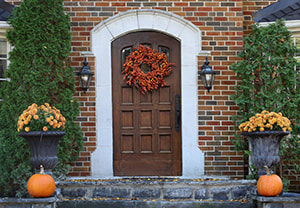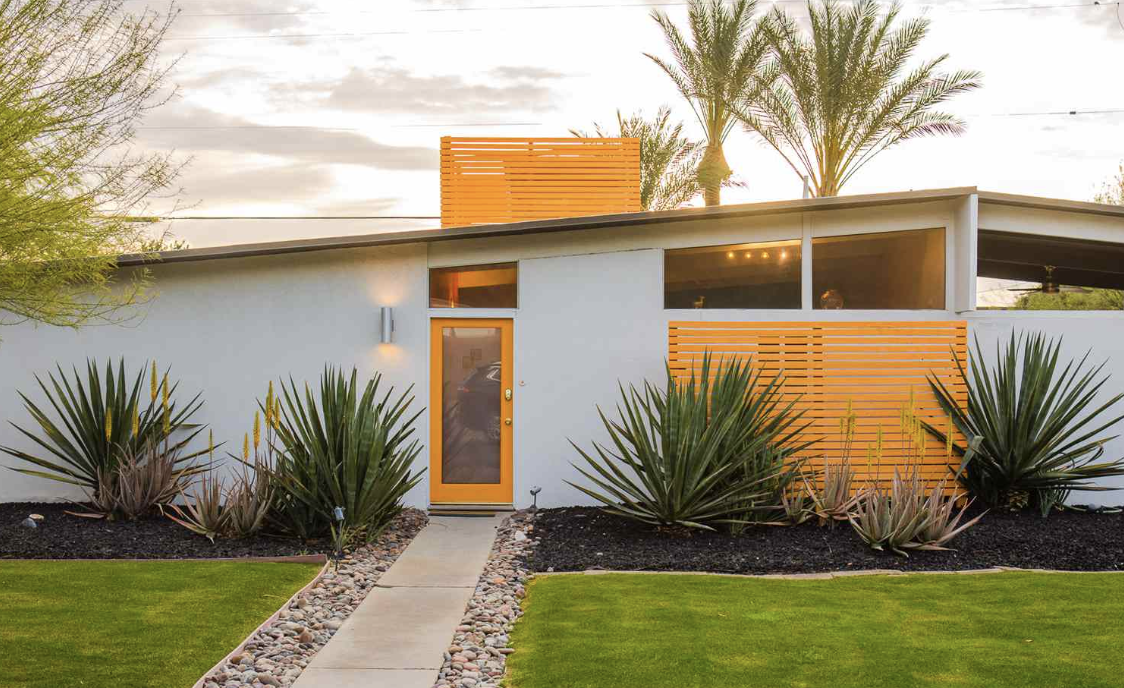 Spring is a popular time for homeowners to start home improvement projects. Enhancing your house can increase its appeal and boost its value. However, before you begin, it’s important to be aware that your upgrades and renovations may impact your homeowners insurance rate. Improvements That Raise Your Insurance Increasing Square Footage A larger home poses a greater risk for accidents, necessitating adjustments to your homeowners insurance to cover the additional risk. Before starting any project that increases the size of your home, inform your insurer. You may need additional coverage for yourself and any workers during the project. Installing a Pool While a pool is an attractive home renovation, it can be dangerous if extra precaution is not taken to protect users. Therefore, it’s one of the renovations that can raise your insurance premium. Homeowners with a pool are required to take out a personal liability cover for medical and legal expenses in case third parties are injured from using the pool. Adding a Commercial Space Running a business from your home can increase your insurance costs to cover the electronics, inventory, and vehicles used in the business. Additionally, you may need to take out a personal liability policy to cover yourself against any trips, falls, or other injuries to customers who may be visiting your new business. Improvements That Decrease Your Insurance Upgrading Your Roof An old or leaky roof will cause your regular maintenance costs to skyrocket and may also increase your homeowners insurance. Replacing your roof with fire- or wind-resistant materials, or features such as hurricane straps, can reduce your insurance premiums by as much as 10%. Installing Water Shut-Off Devices Water damage can cost thousands to repair, and much of this cost has to be handled by your insurance. Installing devices that prompt your water system to shut off when they detect damage can save you up to 3% in insurance premiums, in addition to helping you prevent water damage. Before starting a home renovation, contact your homeowners insurance provider to see how the project will affect your premiums. It’s best to enter into a renovation with all the information on hand.
0 Comments
 When scheduling a home inspection, knowing what to do and what to avoid is crucial. Review these common mistakes to ensure a better inspection experience. Attempting a DIY Inspection Trying to do your own home inspection without professional help is a big mistake. While it might uncover obvious issues like weak spots in floors or leaky roofs, DIY inspections often miss hidden hazards like faulty wiring or corroded plumbing. Trusting a licensed and insured professional ensures these hidden dangers are identified, providing peace of mind about your investment. Neglecting to Vet the Home Inspector Start by seeking recommendations from your real estate agent or trusted contacts. Online resources like the American Society of Home Inspectors (ASHI) and the Association of Certified Home Inspectors (InterNACHI) offer tools to find certified inspectors, while the Better Business Bureau can reveal any complaints. Additionally, verify that the inspector meets your state’s regulations, which can be found on the ASHI website. Paying Too Much or Too Little Finding the right pricing balance is crucial. Rates that seem too low might indicate incomplete inspections, while excessively high prices don’t guarantee superior service. Generally, a single-family home inspection ranges from $300 to $500. Prioritize inspectors who are certified, experienced, and capable of thorough examinations. Comparing prices and services from multiple inspectors or companies is wise to make an informed decision that combines affordability with quality. Not Attending the Home Inspection Neglecting the home inspection means missing out on valuable insights. Make sure to attend, ask questions, and grasp potential risks. While it’s encouraged to be present and engage with the inspector, avoid disrupting their process. The length of the inspection varies based on the home’s size and features, typically lasting a few hours. Attending allows you to witness findings firsthand, aiding in assessing their severity and discussing them with the seller. Being present during the inspection helps you better understand the inspection report and make informed decisions about your potential new home. Ignoring the Home Inspector's Warnings The worst mistake is not listening to the home inspector. They are hired to inspect and fairly report findings. Inspection results can help you decide whether to purchase a home and negotiate repairs. Avoiding these mistakes ensures an enlightening and money-saving inspection experience.  The interior of your home can be stunning, but if the exterior isn’t impressive, you will shut down buyers before they even enter the house. Curb appeal—the attractiveness of your home when viewed from the curb—makes a significant difference to homebuyers. Here are four reasons why it’s so important: Online Presentation In today’s real estate landscape, potential homebuyers get their first impression of a home from online photos. If the real estate photos of your home exterior portray a neglected property, homebuyers may not even click through to see the amazing interior. To sell your home quickly, take the time to clean up the exterior so the photos truly shine. Perceived Value Any offers made on a home with poor curb appeal will likely be below the asking price. If you aim to sell your home at or above the asking price, invest in generating curb appeal to secure homebuyers’ interest. Basic landscaping services—such as mowing the lawn, pruning trees and shrubs, or planting flowers in garden beds—aren’t expensive and will go a long way in helping your home make a strong first impression. Interior Confidence With a positive first impression, buyers are much more likely to be charmed by a home’s interior. While interested home shoppers will still do their due diligence, such as scheduling a home inspection, they will establish assurance that the home was well cared for. However, if the outside of the house is neglected, they will assume interior maintenance tasks, such as HVAC maintenance, were neglected as well. Emotional Attachment If buyers fall in love with the charm of your landscaping and front porch, there’s a good chance they will fall in love with the house and make you an offer. With just a few smart improvements to your home’s exterior, a homebuyer might form an immediate emotional connection from the very first view of your house, which will entice them to put in their best offer. Real estate professionals know the value of considering curb appeal from a buyer’s perspective. If you want to sell your home quickly and for a fair price, plan to invest in improvements that will maximize your home’s curb appeal.  Existing-home sales declined in October across the country, according to the National Association of Realtors (NAR), with all four sales regions experiencing year-over-year declines. Month-over-month sales were unchanged in the Midwest but fell in the Northeast, South, and West. Fueling the sales declines were a lack of housing inventory and high mortgage rates, according to Lawrence Yun, chief economist for NAR. “Multiple offers, however, are still occurring, especially on starter and midpriced homes, even as price concessions are happening in the upper end of the market.” Rising Prices and Home Sellers’ Gains Although home sales were down in October, existing-home prices continued to climb, increasing 3.4% year over year to reach a new all-time high. Every sales region in the country posted price gains. Homeowners have done particularly well in the housing market as of late, according to Yun. “In fact, a typical homeowner has accumulated more than $100,000 in housing wealth over the past three years.” Market Dynamics: Days on Market and Buyer Trends According to the REALTORS Confidence Index, the average property remained on the market for 23 days in October, up from 21 days both a month and a year ago. Of all the homes sold in October, 66% were available for under 30 days. First-time buyers remained undaunted by the challenging market conditions, as this group accounted for 28% of all sales, a slight increase from September and unchanged from October 2022. Ongoing demand continued from all-cash buyers as well, with this group representing 29% of all October transactions. Mortgage Rates, Inventory, and Future Outlook The 30-year fixed-rate mortgage averaged 7.44% as of November 16, according to Freddie Mac. This was the third consecutive week of rate declines, which served to fuel buyer interest. These buyers, however, still face persistent housing shortages. At the end of October, the housing inventory was 1.15 million units, an increase of 1.8% from a month ago but a decrease of 5.7% from a year ago. At the current sales pace, unsold inventory would supply the market for 3.6 months, up from a 3.4-month supply in September and a 3.3-month supply in October 2022. “Though limited now, expect housing inventory to improve after this winter and heading into the spring,” said Yun. Economists expect the increase in inventory to boost home sales in the coming year. Regional Sales Breakdown Northeast: Existing-home sales annual rate of 480,000; a decrease of 4% from September 2023 and 15.8% from October 2022. The median sales price of $439,200 represented an increase of 7.5% from October 2022. Midwest: Existing-home sales annual rate of 930,000; unchanged from September 2023 but a decrease of 13.9% from October 2022. The median sales price of $285,100 represented an increase of 4.2% from October 2022. South: Existing-home sales annual rate of 1.69 million; a decrease of 7.1% from September 2023 and 14.6% from October 2022. The median sales price of $357,700 represented an increase of 3.5% from October 2022. West: Existing-home sales annual rate of 690,000; a decrease of 1.4% from September 2023 and 14.8% from October 2022. The median sales price of $602,200 represented an increase of 2.3% from October 2022.  When looking for a home, one common piece of advice is to choose a property that will appreciate in value. However, value is subjective. For example, a dream home with an in-ground pool for one person might be a hassle for another. These three house hunting tips will aid you in objectively assessing a property’s potential and identifying the assets that tend to appreciate in value the most. Look for Hidden Gem Neighborhoods Some house hunters search for neighborhoods that have already become popular, but buying in a hot neighborhood means you’ve missed out on much of the appreciation. These homes have already seen a boost in value due to the appeal of the area. To find a home that will appreciate in value, focus on neighborhoods with moderately priced houses showing signs of potential growth: well-kept homes, low crime rates, and close proximity to schools or parks. Purchasing before the neighborhood gains popularity ensures you’ll maximize your potential profit. Find the Perfect Fixer-Upper It’s common knowledge that fixer-uppers can be a good investment, but take note: Not everyone is willing to put in the work themselves or able to pay for needed repairs. Some fixer-uppers also have too many issues, such as foundation or structural problems, so you would not be able to recoup your expenses when selling the home. Search for homes that need only cosmetic improvements. The key to finding a worthwhile fixer-upper is to know what tasks you’re willing to do yourself and when you need to call in a professional. Evaluate potential gains by crunching numbers before putting in an offer. Avoid making an offer if a property requires more work than you’re financially prepared to undertake. Prioritize Amenities and Curb Appeal Look for a home with amenities that are always in demand, such as a nice yard, patio, or front yard flower garden. Often, it only takes a fresh coat of paint or a little bit of staging—such as setting out potted plants or patio furniture—to boost curb appeal and entice buyers. Homes near parks, schools, or other local amenities also attract buyers and have a built-in value. Consider the house hunting process through the lens of what your home will be worth in the future. Will it increase in value to make you a considerable profit? Look for attributes that are attractive to a wide range of buyers to help narrow down your search and give you confidence in your new home.  Technology has transformed the way homes are appraised, and a new set of rules has emerged for sellers looking to maximize their home’s appraisal value. Understanding modern appraisals is essential, as appraisal value is critical in determining a home’s asking price. Traditionally, home appraisals were done manually by professionals who used their expertise to evaluate properties based on location, size, condition, and market trends. Appraising a home was a mixture between the subjective and the objective, and it often came down to a personal decision by the appraiser. The New Appraisal Landscape Traditional appraisals are being replaced by automation. According to a report by analytics firm CoreLogic, an estimated 70% of residential property valuations in the U.S. are conducted using automatic valuation models (AVMs). AVMs are computer programs that use a property’s data, such as its location, size, age, and historical sales, to estimate the property’s value. The newest AVMs incorporate algorithms that use complex mathematical models to analyze every last piece of available data about a property; this predicts the current and future value with even higher levels of precision. AVMs Need Accurate Data The most important step homeowners can take to prepare for an AVM-based valuation is to ensure their property information is accurate in all government records and also in any informal online listings. This is especially important for older homes whose improvements and renovations might not be reflected in public property records. AVMs have the ability to read the internet, so the more positive data about a property, the better. Make sure any unique features or amenities are thoroughly described in all records. Be Aware That AVMs Have Limitations AVMs may not capture certain aspects of a property, such as its unique features or intangible benefits that are not fully reflected in property records. In these cases, it may be necessary to supplement an AVM with a traditional appraisal. When selecting a traditional appraiser, look for professionals with local experience who will appreciate the holistic value of a home, including less-tangible factors like the view, architectural features, or other aesthetic qualities. New technology always has drawbacks. AVMs aim to eliminate guesswork from home appraisals, but in reality, the human factor always plays a crucial role in determining a home’s actual value. If you’re ready to buy or sell, reach out today! I can help you get the best price for your property in the current market. |
AuthorA variety of pertinent real estate topics and tips from various authors and contributors. Archives
December 2024
Categorieshow much home can i afford?*
|


